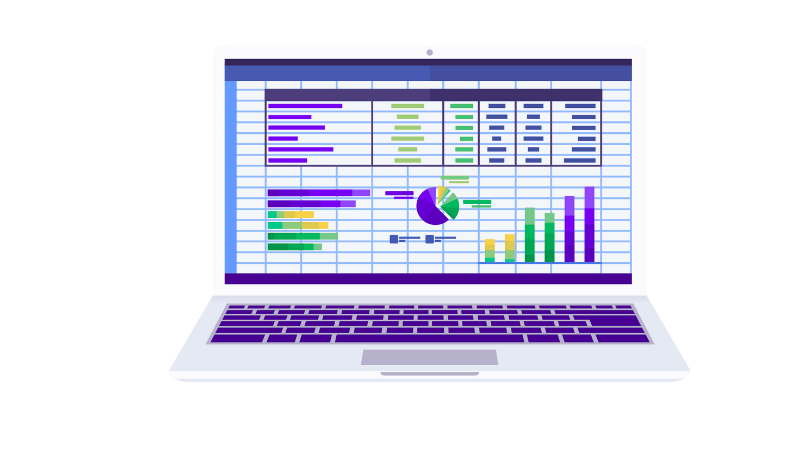Presented by
- Xander Karsten - Legal Server
- Jack Haycock - Pine Tree Legal
- Kathleen Caldwell - Pine Tree Legal
- Sheila Fisher - North Penn Legal Services
- Christopher Alfano - Illinois Legal Aid Online
- Mirenda Meghelli (moderator) - Pro Bono Net
Future Proofing Your Project webinar slides
Today we hosted a webinar that covered some of the things an organization can do now to reduce the chances of something in the future happening to mess everything up. We cover what can be done both on an individual level and on a project level, the core points for each are as follows.
For People
- Don’t just document what you do, take some time to explain why. If the next people don’t understand why they are doing things they will have a harder time improving on the process and are more likely to misapply it.
- Start documenting things yesterday and incorporate documentation as a step in your workflow. It’s much easier to document things as you go than it is to sum up years of work at the very end, and the results will be much better to boot. Also remember that while you can predict your retirement it’s much harder to predict getting hit by a bus, unexpected leave of absences happen and good documentation smooth things out.
- If you can arrange overlapping time between someone exiting a position and the person filling it.
For Projects
- Make sure the workload is well distributed and people are familiar with what role everyone plays. Make sure that no one person is so critical that their removal will sink the project.
- Find a project management tool that works for you and use it, there are lots of good ones that can be used for free.
We have also split one section of this video off into it’s own video, Christopher Alfano of ILAO did such a good job covering A2J Author vs HotDocs we have split it into it’s own video so It’s easier for people to find in the future, be sure to check out the A2J Author vs HotDocs video here.
Lessons Learned from Family Leave
- Utilize existing resources; don’t re-invent the wheel: I borrowed Xander’s transition memo as a template for my coverage memo
- Set aside time to document and review: allow your colleagues an opportunity to ask questions while you are still around; what is clear to you may not be clear to everyone
- Notify who you work with well before you leave: inside and outside the office
- Be flexible and prepare for different scenarios: the baby comes when they are ready
- Make like a tree...: prepare for the leave, then leave and trust everything will be okay
Statewide Website Project Staff Transition Checklist
- Before website coordinator / admin leaves:
- Get stakeholder committee list
- Find out date and agenda items for next stakeholder meeting
- Advocate site membership policy -- is there one? Get a copy.
- Discuss and document transitional project priorities, for example:
- Content review
- Milestone reporting activities and documentation
- Outstanding marketing activities
- Get usernames and passwords for websites or other tools (e.g. social media), as needed
After coordinator / admin leaves:
- Deactivate former admin’s user account on LawHelp and probono.net sites
- Replace LawHelp feedback email under Site Set Up –> My State
- Change advocate site join and welcome email sender and signature to new admin
- Add new admin as moderator of listservs as needed; remove old admin
- Contact PBN about trainings and welcome packet for new admin
- Arrange for another project staff person to review and approve members and site content if admin / coordinator is not replaced immediately
Selected Resources
- Executive Director Julia Wilson’s blog post about how OneJustice planned for the 3-month sabbatical she look last year and dealt with knowledge transfer and continuity
- Sucession Planning for Nonprofits
- Strategies for Future-Proofing your Technology
- Managing Document Automation Projects LHI Webinar
The Background
- Kathleen has (had?!) been with Pine Tree Legal Assistance for 35 years - 20 of those years as the website coordinator.
- Jack started as Kathleen’s intern in the Fall of 2015 - and kept working on projects in various capacities until starting full-time as the website coordinator in August, 2016.
- There is a TON of information to pass on when you have been doing a job for 20 years - and we did our best.
- For better or worse, there was no institutional system or protocol for this kind of staffing transition.
- Most of the time we were working in different offices.
- We don’t have a formal system, but we do have some best practices to share - things we each did that made this process much easier.
Staffing Transition Best Practices
Transfer Institutional Knowledge
Not just what we do - why we do it
Which partnerships need to be maintained
Past mistakes and successes
The power of 20 years of hindsight
Limitations on what you can capture
Overlapping Time is Key
- A good chance to address the minutia - and the big picture
- In person is the best option - but it’s possible remotely
- Use any overlapping time you have If you don’t have any, try to advocate for getting some - even a little bit will help
From the mentor’s perspective
- It helps to love your work. If you do, convey that.
- Documentation - as you go. (If you didn’t, it’s too late.)
- A good mentee is curious, asks lots of questions, insightful question, dumb questions - matters not, as long as they’re totally engaged.
- Make mistakes.
- Good systems help, but they don’t take the place of mentoring.
Asana
- Free for up to 15 users!
- Intuitive and easy to organize
- Neat visual tools for tracking project status and progress
- Easy to see the development of a project over time - could be used in transitions to get new people up to speed quickly.
More free, inexpensive, or worth-the-price software?
- Google drive
- Basecamp
- Jira
- Trello
- Slack
- Confluence
Tips from other programs
- Illinois Legal Aid Online (Gwen Daniels) - “We have weekly meetings so that everyone on the team has a good idea of the overall enterprise. Then, when someone leaves, we already have a lot of institutional wisdom built in among remaining staff.”
- For website administrators, Drupal has a documentation module (“Revisions”). Most other systems have something similar. Use it!
- Who else has tips?
- Use tools like Google Sheets to help coordinate and get on the same page.
Motivations for new projects?
➢Outdated system which is under-performing
➢ Increasing efficiencies and cost-savings
➢New, hot projects touted at TIG conferences and webinars
➢Priority categories in each year’s TIG application process
➢LSC baseline technology guidelines and tech plans
➢Desire to be leader or early adopter
➢Grant money $$$$$ !
Considerations
- How does the new project or technology:
- Fit in with other technologies already in use?
- How much training/new skill development will be required?
- Can needs be met with existing technology?
- How will new technology advance service goals?
How to avoid project pitfalls
- Ask experts / get second opinions
- Ask to see demos / be demanding for specifics
- Get commitment from management for funding beyond project term
- Get commitment from management to incorporate “project” into program culture or service goals
- Remember tech project aren't money makers!
Keys to Transition Planning
- Plan Early, Plan Often
- Know your partners
- Know your deliverables
- Know your tools
Succession Planning
Looking at the whole of the project-
- Who understands where piece of the project is?
- Who could absorb some or all of the project?
- What documentation would they need?
- Who can help make sure they are successful?
Know your Partners
- For each person/partner
- Share email address and phone numbers
- What is their role, AND who will step in or play backup?
- Who to contact if I REALLY need someone?
Accountability Matrix/Responsibility Charting
- Lay out in a public document who on the team is responsible for what part of the project
- Identify who will be their backup (either internally or externally)
- Analyze if one person or group is responsible for too much
Know your deliverables
- Make goals or deliverables transparent & accessible
- Review, revisit and rework often and with the group.
- Start with where you want to be, and plan from there!
Know your tools
- Does it meet your needs?
- Is it easy to maintain?
- Do your partners know and understand it?




